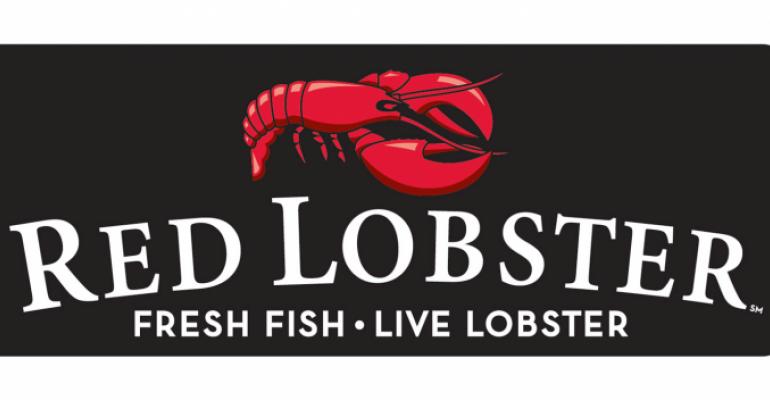We’ll find out soon which of two proposals to restructure chain giant Darden’s restaurant brand portfolio—one championed by activist investors, the other floated by Darden itself—will prevail. But in the meantime, many full-service chain operators may be wondering what these moves say about where the casual dining segment is headed. Some may even be wondering if buying a Red Lobster franchise—never an option before—might now make sense.
The key issues were addressed in a conference call last week during which Darden officials announced second quarter 2014 results and explained the thinking behind the new direction they propose.
To recap, activist investment firm Barington Capital Group wants Darden to spin off both Olive Garden and Red Lobster into a new company, keep the company’s six other, faster-growing brands in the existing company and monetize the company’s significant real estate assets by creating a separate, publicly traded real estate investment trust. So, three companies instead of one.
Darden’s proposal is less far-reaching. Executive chairman/c.e.o. Clarence Otis told analysts it was “a comprehensive strategic action plan that includes spinning off Red Lobster, reducing new unit expansion, a more intensive focus on operating cost efficiency and refining our incentive compensation plan.” Olive Garden would remain a part of Darden and no REIT would be formed.
The lone point of agreement between the competing plans: Red Lobster has to go.
How come? One issue: the chain doesn’t attract moderately affluent consumers the way other Darden brands do.
Consider. “At Olive Garden for example, we had 11 percent more visits last year, fiscal 2013, from guests with household income over $100,000 than we did five years earlier in fiscal 2008,” Otis told the analysts. “And for the same period, visits to LongHorn from guests in that income demographic increased by more than 50 percent. In contrast, Red Lobster traffic from this income demographic was flat in 2013 compared to 2008.”
Another negative: an aging customer base. Otis pointed out that every Darden brand is having success increasing its relevance to younger consumers except for one: Red Lobster.
So would there be a market for a 705-unit full-service seafood chain with these issues? Otis makes a solid case for the value of a standalone Red Lobster.
“The key strengths and opportunity for the business lie in its heritage as an iconic American brand that helped pioneer the casual dining sector, its strong and consistent annual free cash flow generation and the dedicated and highly experienced team that will lead the business,” he told analysts. “With the improved guest targeting that the spin will enable, Red Lobster will, we believe, more quickly and more sustainably achieve same-restaurant sales stability and margin improvement.
“And then looking out, we think that as a standalone company, Red Lobster can generate low-single digit revenue growth and mid- to high single-digit operating income growth. Given its core guest base and the nature of seafood, there will continue to be volatility in quarterly sales and earnings results. But in contrast, annual cash flows have been strong and consistent, and that's expected to continue. And Red Lobster's cash flows—the new Red Lobster—should support substantial and stable return of capital to shareholders through dividends and share repurchase.”
James Mitarotonda, the chairman and c.e.o of Barington Capital, dubbed the Darden proposal “incomplete and inadequate.” But Darden’s board of directors has the power to implement this plan. Otis said, “We anticipate that Red Lobster will be spun off as a separate publicly traded company sometime in early fiscal 2015.”
As the questioning wound down on the conference call, analyst Jeffrey Andrew Bernstein from Barclays Capital queried Otis by asking this: “I was just wondering on Red Lobster—or actually, Olive Garden as well—whether you consider holding Red Lobster and/or franchising either one of the brands.”
Otis didn’t tell him no. “Red Lobster has a different return profile (than Olive Garden). It’s got more variability in returns within its portfolio, and so franchising is something that Brad (Brad Richmond, the current Darden c.f.o. who is scheduled to be c.f.o of the new Red Lobster) and and Kim (Lopdrup, now president of Darden’s Specialty Group, tabbed to become c.e.o of new Red Lobster) will take a pretty hard look at.”
That they’d consider it at all is big news. Although Darden selectively franchises Red Lobster and other brands internationally, that’s not the case in the U.S. The chain’s website flatly states: “Red Lobster does not franchise. All Red Lobster restaurants are company owned and operated.”
The implication here: Red Lobster is a brand that no longer works well in Darden’s portfolio, but certain of its units could be big contributors to other restaurants’ brand portfolios.
Stay tuned; this one’s far from over.
0 comments
Hide comments





